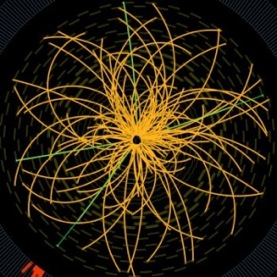C reative
Particle
Higgs
CPH Theory is based on Generalized light velocity from energy into mass.
CPH Theory in Journals
|
Signal for Higgs Boson Particle Gains Strength
|
|
Signal for Higgs Boson Particle Gains Strength
The latest analyses from the Large Hadron Collider boost the case for the particle's existence, but there's no new data | February 7, 2012
Reanalyses of existing data have pushed the overall Higgs signal up to 4.3�.Image: CMS
Today the two main experiments at theLarge Hadron Collider (LHC), the world’s most powerful particle accelerator, submitted the results of their latest analyses. The new papers boost the case for December’s announcement of a possible Higgs signal, but let’s not get too excited. First, there’s no new data in there—the LHC stopped colliding protons back in November, and these latest results are just rehashes that earlier run. In the case of the Compact Muon Solenoid (CMS), physicists have been able to look at another possible kind of Higgs decay, and that allows them to boost their Higgs signal from 2.5σ to 3.1σ. Taken together with data from the other detector, ATLAS, Higgs overall signal now unofficially stands at about 4.3σ. In other words, if statistics are to be believed, then this signal has about a 99.996 percent chance of being right. It all sounds very convincing, but keep your hat on, because the fact is that statistical coincidences happen every day. Over at Cosmic Variance, Sean Carroll points out that there is a 3.8σ signal in the Super Bowl coin toss. Does that mean that they’ve discovered a super-partner to the bowl? No. (If you don’t get that joke, don’t worry, it was written only as punishment for those who would). After the LHC starts this spring, we’ll be much closer to knowing what’s actually going on. Right now, scientists are meeting in Chamonix, France to decide at what power to run the collider this coming year. The latest rumours are that the machine will push from 7 to 8 TeV, and it will also increase its luminosity (the number of collisions per pass).
Source: Scientific American
1 2 3 4 5 6 7 8 9 10 Newest articles
|
|
Sub quantum space and interactions from photon to fermions and bosons |
Interesting articles
Since 1962 I doubted on Newton's laws. I did not accept the infinitive speed and I found un-vivid the laws of gravity and time.
I learned the Einstein's Relativity, thus I found some answers for my questions. But, I had another doubt of Infinitive Mass-Energy. And I wanted to know why light has stable speed?

